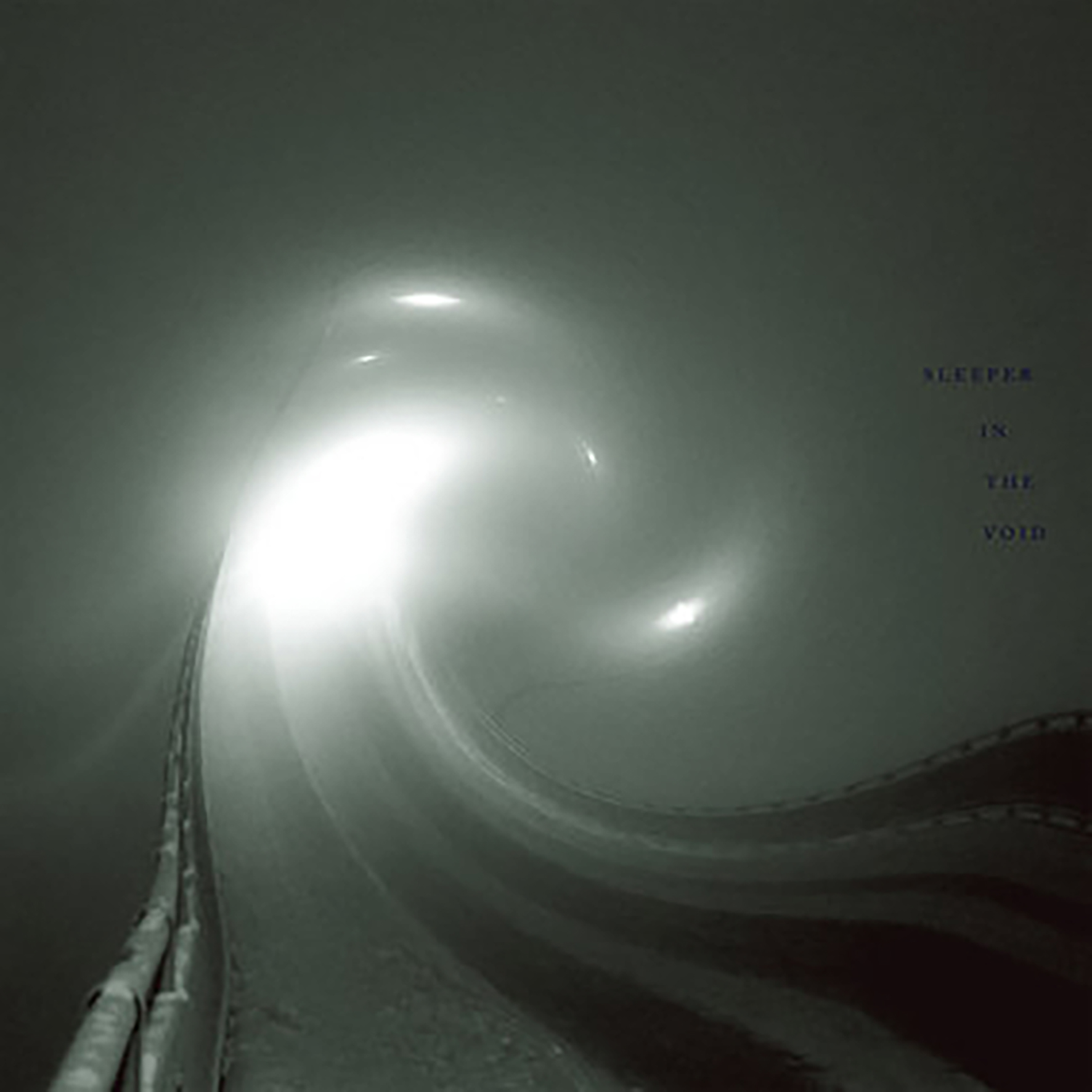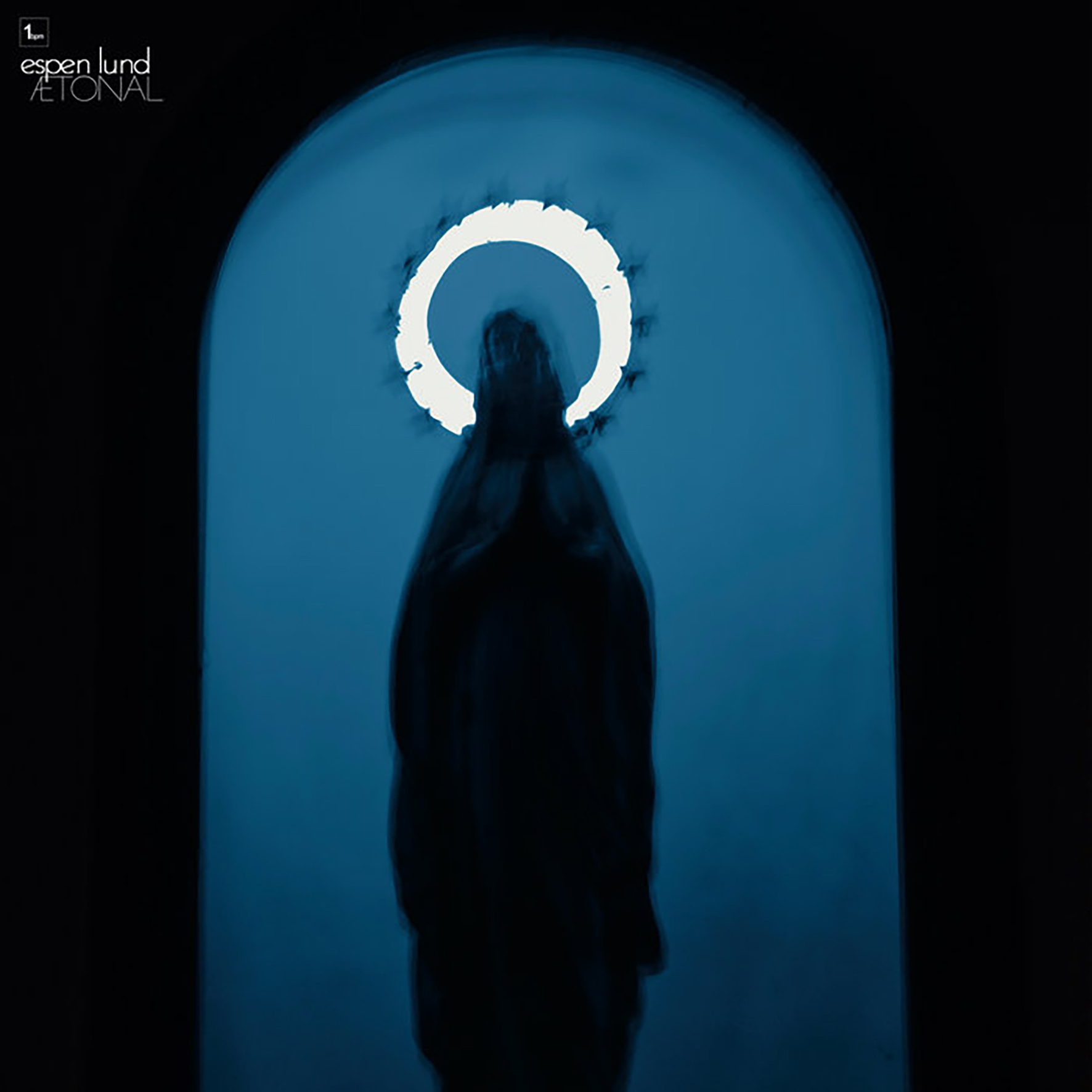
It has admittedly been quite a long time since the theatricality and ferocity of proper black metal held any allure for me, but the genre has certainly birthed quite a few fascinating mutant strains in the drone and psych realms over the years. The latest one to blindside me is this blackened drone leviathan from Norwegian trumpet visionary Espen Lund. Gleefully mangling the sound of his hapless trumpet is hardly new territory for Lund, but this album (his third) takes that approach to an ingenious extreme. As Lund himself put it, "The trouble with amplifying instruments that don't want to be amplified is the amount of feedback produced. On this album, the thought process was to incorporate the feedback and make it an integral part of the music." While I do believe that modest quote is factually correct, Aetonal instantly makes it feel like an almost cartoonishly massive understatement, as Lund and his ring of straining amplifiers unleash a crushing, snarling, and blown-out nightmare that is absolutely unrecognizable as a trumpet. If I heard this album completely blind, I would absolutely think I was hearing some killer Surface of the Earth, Campbell Kneale, or Southern Lord album that had somehow eluded me.
self-released
The opening "As Above, So Below" slowly rolls in like an moonlit fog enveloping an ancient Druidic ritual before dissolving into a brief, simple trumpet solo. And then all hell breaks loose, as the piece erupts into a roiling, ritualistic, and treble-ravaged channeling of recent Skullflower. It is a wonderfully face-melting assault (particularly for a lone trumpet), but it also surreptitiously evolves into something almost meditative (think "Sunn O))) as the house band at a Tibetan Buddhist temple"). Next, "For a Thousand Tongues to Sing" takes a somewhat similar path, approximating a doom metal band attempting to mimic a bagpipe ensemble, but then a war horn heralds a transformation into something best described as “sci-fi tribal meets a trippy '70s synth album being played through a noise band's gear." Aetonal does not truly catch fire until the grinding horror of the third piece, however, as "Speak Into His Good Eye" gleefully mashes together animal-like howls, maliciously weaponized feedback, machine-like rhythms, and an imagined duet between a calliope and rusty Ferris wheel in a nightmarish abandoned amusement park. "The Creator’s Voice" then steals the show, initially resembling a doom metal band soundtracking slow-motion footage of an avalanche, but ultimately passing through some mind-meltingly phantasmagoric stages such as "the world is burning and molten metal is dripping from the sky" and "a howling robot Tyrannosaurus just turned up and seems mad." It feels like the sort of scorched earth blow-out that nothing could follow, yet the closer is yet another stunner, ingeniously evolving from shrill, shimmering drones to "a terrifying feedback demon just materialized" to an unexpectedly beautiful and smoldering comedown. Generally, Aetonal is great because Lund and his trumpet unleash something resembling an absolutely essential masterpiece of late '90s New Zealand noise guitar, yet a few pieces hint at something more transcendent, like a faint rainbow appearing in the wake of an apocalyptic storm. That said, it also sounds like a copy of the Necronomicon mysteriously turned up at Lund's studio with a bookmarked page titled "Summon A Drone Album So Unholy That It Will Kill God." Aetonal is a towering achievement.
Samples can be found here.


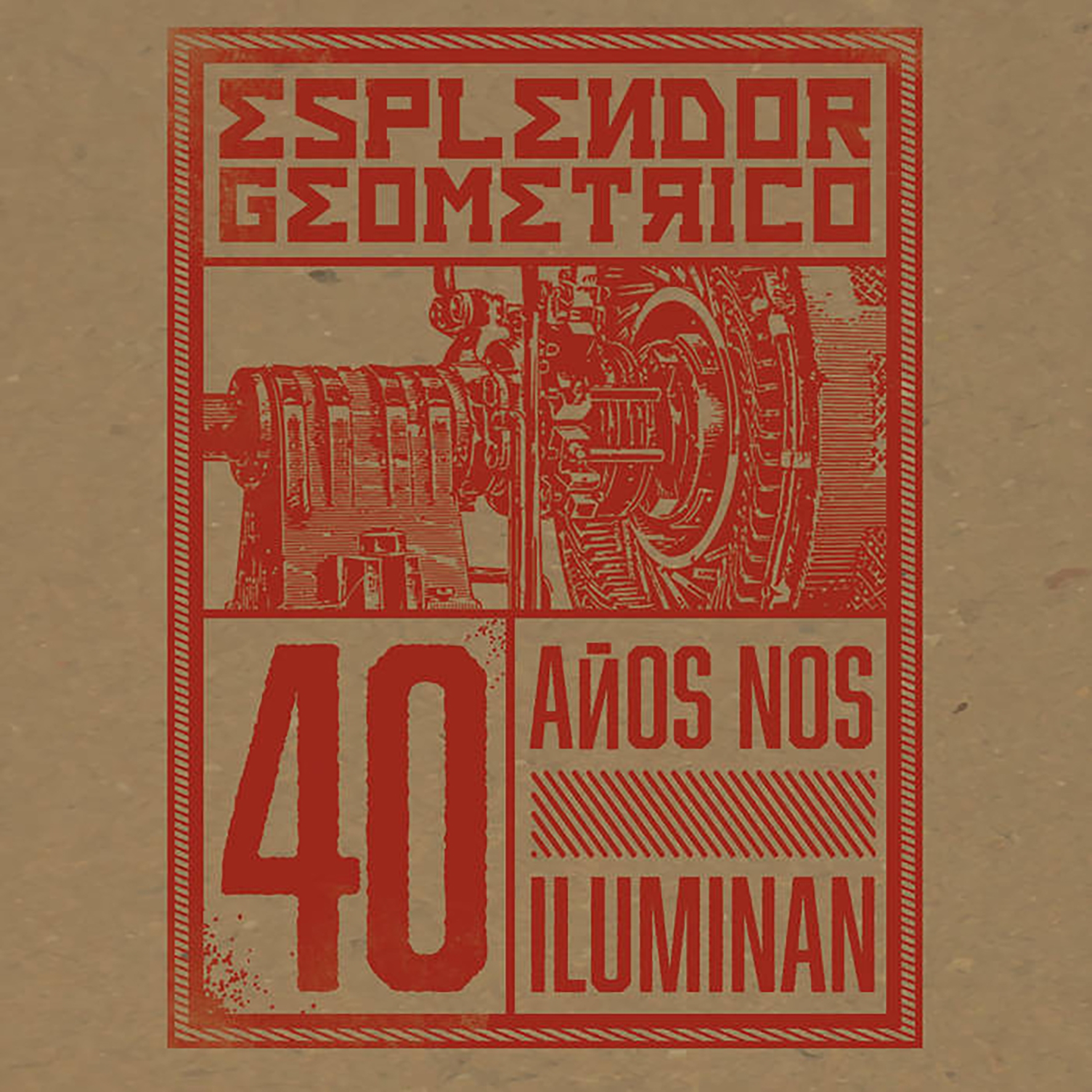 This is definitely one of the more confounding Esplendor Geométrico releases in recent memory, as it is ostensibly a celebration of the project's 40th anniversary (the title translates as "40 years illuminate us"), but is also ostensibly all-new material that somehow feels like at least three different bands. There is a logical explanation for that, as the album features several collaborations, some recent compositions, and a number of noisy, pummeling throwbacks to EG's early years (presumably revisiting that style with the benefit of four decades of illumination). An impressively honest additional explanation can be found in the liner notes, however, as the duo note that neither member makes a living from music, which frees them to "do what they want without even thinking of what their fans and followers expect." As a longtime EG fan, I can confirm that this album was definitely made without any consideration for whether or not I would like it (or whether it even makes complete sense). Then again, anyone who has been releasing great albums for several decades is entitled to celebrate with a go-for-broke, everything-but-the-kitchen-sink epic if they feel like it. It is all perfectly fine by me, but anyone simply searching for a good recent EG album should give this one a wide berth and head towards Cinética instead (also from 2020). That said, there are definitely plenty of bludgeoning percussion assaults here that fans of the project's noisier side will enjoy (as long as they do not mind sifting through an unusually prickly, blunt, eclectic, and overwhelming batch of songs).
This is definitely one of the more confounding Esplendor Geométrico releases in recent memory, as it is ostensibly a celebration of the project's 40th anniversary (the title translates as "40 years illuminate us"), but is also ostensibly all-new material that somehow feels like at least three different bands. There is a logical explanation for that, as the album features several collaborations, some recent compositions, and a number of noisy, pummeling throwbacks to EG's early years (presumably revisiting that style with the benefit of four decades of illumination). An impressively honest additional explanation can be found in the liner notes, however, as the duo note that neither member makes a living from music, which frees them to "do what they want without even thinking of what their fans and followers expect." As a longtime EG fan, I can confirm that this album was definitely made without any consideration for whether or not I would like it (or whether it even makes complete sense). Then again, anyone who has been releasing great albums for several decades is entitled to celebrate with a go-for-broke, everything-but-the-kitchen-sink epic if they feel like it. It is all perfectly fine by me, but anyone simply searching for a good recent EG album should give this one a wide berth and head towards Cinética instead (also from 2020). That said, there are definitely plenty of bludgeoning percussion assaults here that fans of the project's noisier side will enjoy (as long as they do not mind sifting through an unusually prickly, blunt, eclectic, and overwhelming batch of songs).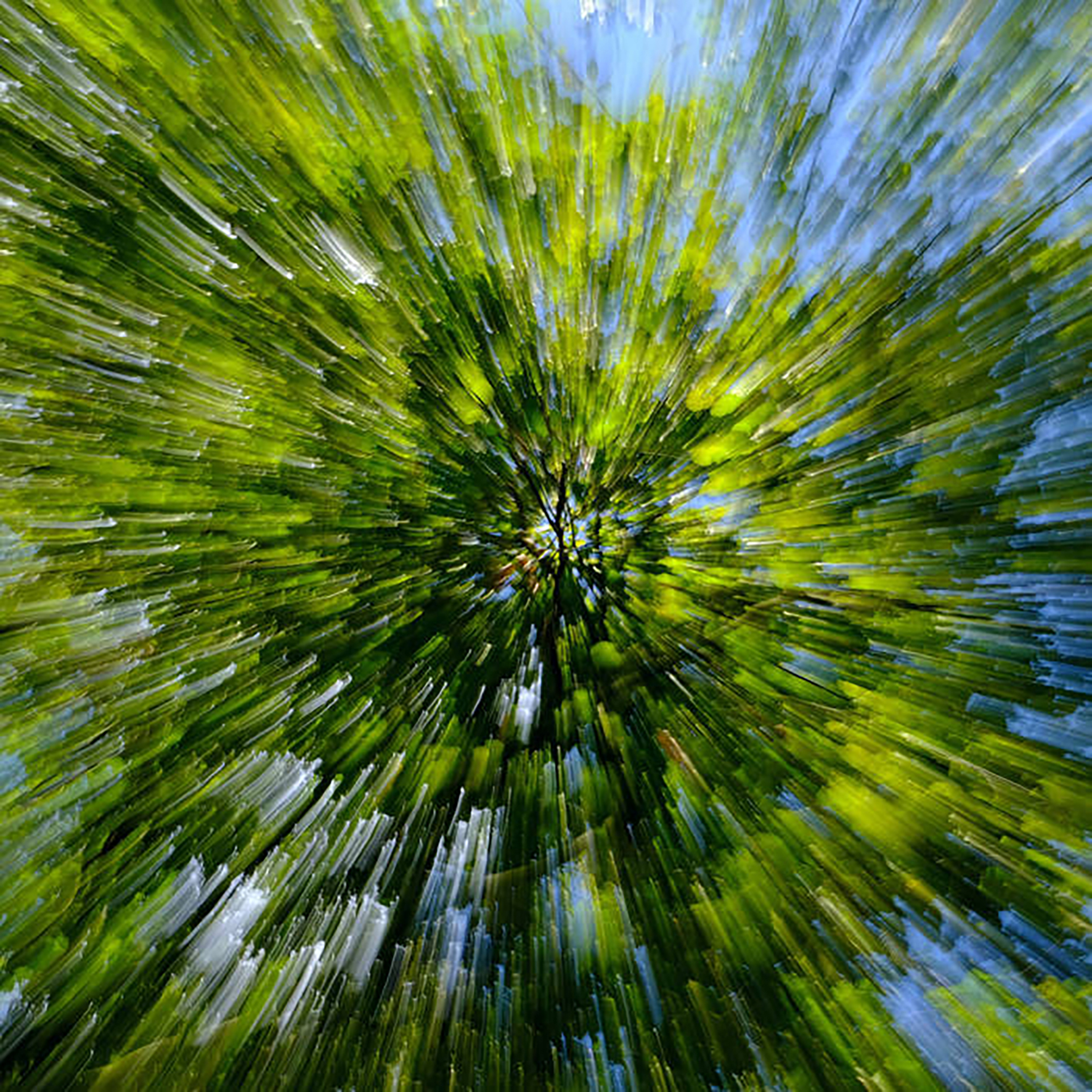
 Die Munch Machine is the side project of Tim Cedar and Jon Hamilton from Part Chimp. While both Part Chimp and Die Munch Machine may perform loud, the similarities extend no further. Die Munch Machine slough off the stoner doom skin in favor of feedback-populated motorik space funk. While not essential listening, this is a fun listen for spaceheads and fans of kosmische rock.
Die Munch Machine is the side project of Tim Cedar and Jon Hamilton from Part Chimp. While both Part Chimp and Die Munch Machine may perform loud, the similarities extend no further. Die Munch Machine slough off the stoner doom skin in favor of feedback-populated motorik space funk. While not essential listening, this is a fun listen for spaceheads and fans of kosmische rock. It has been quite a long time since these shape-shifting drone stalwarts from Kranky's golden age last surfaced with a major release, aside from the gnarled, bass-heavy Disorder LP that teasingly appeared on Important back in 2017. While I am certainly happy to have them back, this latest release from the core duo of Joe Denardo and Kevin Doria takes a somewhat unexpectedly minimalist and meditative direction. I am tempted to call Diptych a "return to form," but Growing have several different appealing forms they could potentially return to and this one arguably feels like a mis-remembered return to the pair's Kranky era, as these radiant slow-motion reveries pieces feel more akin to Stars of the Lid than any Growing album I recall. Whether that is a step in the right direction or not is hard to say, as a strong case could be made that project's killer run of weirder, spacier releases in 2007 & 2008 was its zenith and that this latest opus sands away all of the duo's distinctive quirks and sharp edges. From a purely artistic perspective, however, Diptych is quite an impressive achievement, as Doria and Denardo distill drone to its purest essence with an almost supernatural degree of control and patience.
It has been quite a long time since these shape-shifting drone stalwarts from Kranky's golden age last surfaced with a major release, aside from the gnarled, bass-heavy Disorder LP that teasingly appeared on Important back in 2017. While I am certainly happy to have them back, this latest release from the core duo of Joe Denardo and Kevin Doria takes a somewhat unexpectedly minimalist and meditative direction. I am tempted to call Diptych a "return to form," but Growing have several different appealing forms they could potentially return to and this one arguably feels like a mis-remembered return to the pair's Kranky era, as these radiant slow-motion reveries pieces feel more akin to Stars of the Lid than any Growing album I recall. Whether that is a step in the right direction or not is hard to say, as a strong case could be made that project's killer run of weirder, spacier releases in 2007 & 2008 was its zenith and that this latest opus sands away all of the duo's distinctive quirks and sharp edges. From a purely artistic perspective, however, Diptych is quite an impressive achievement, as Doria and Denardo distill drone to its purest essence with an almost supernatural degree of control and patience.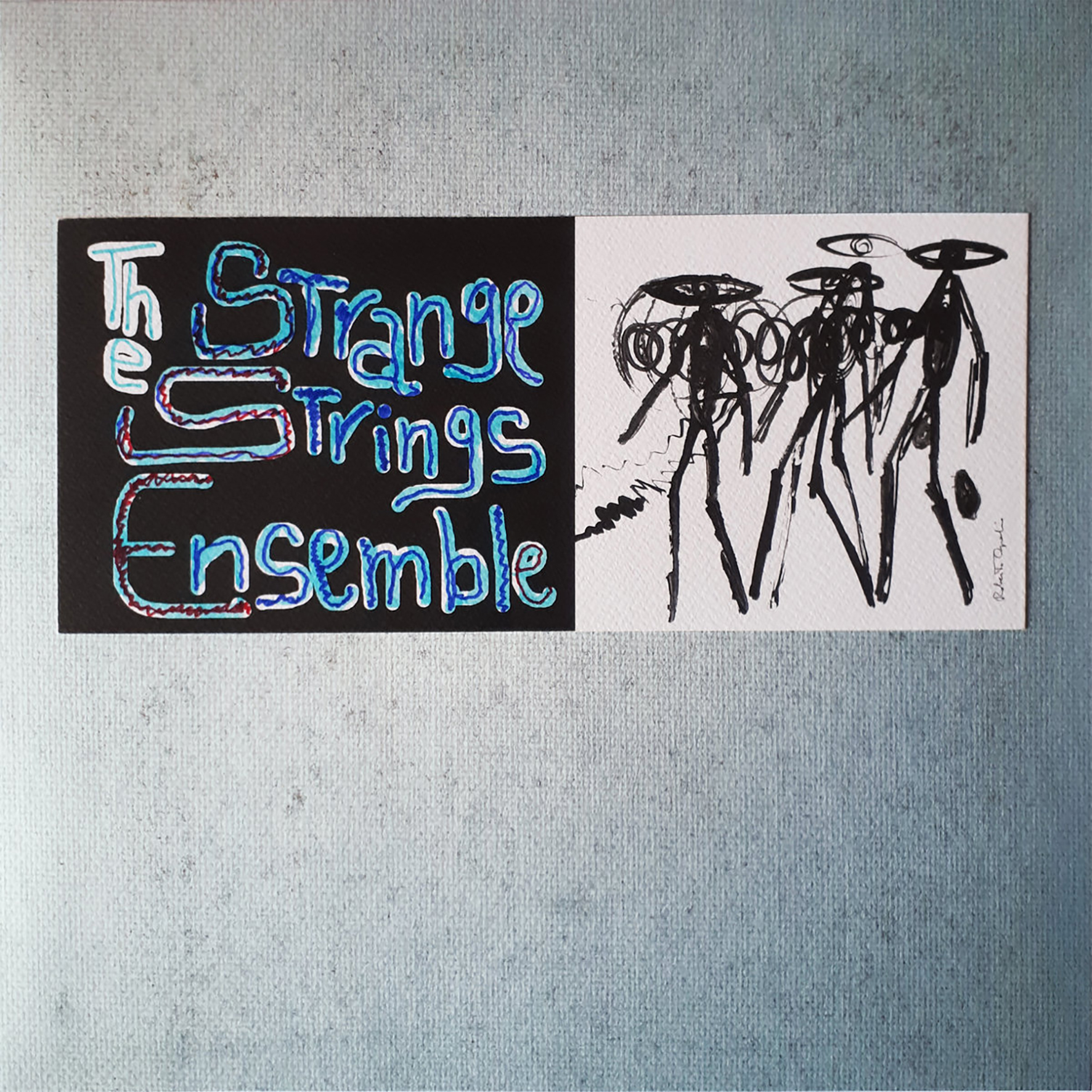 It fair to say that any album involving the Opalio brothers is destined to be memorably bizarre, but this Sun Ra-inspired EP takes My Cat is an Alien's vision even further out into fringes of outsider psychedelia than usual. For one, it is almost entirely acoustic, so there are no alientronics or psychotropic drones to be found and Roberto's queasily floating vocals seem (mostly) absent as well. Obviously, that eliminates nearly everything "familiar" about MCIAA's vision, so it makes a lot of sense to give this project a fresh name. In lieu of the expected alien terrain, the ensemble (rounded out by writer Philippe Robert & Joëlle Vinciarelli) "spontaneously composed" a visceral, churning, and jagged eruption using the "ancient, mostly ethnic, acoustic string instruments from Vinciarelli's vast collection." In keeping with the Sun Ra theme, the instruments were purposely untuned in homage to the late jazz icon's 1967 Strange Strings album, which Ra dubbed "a study in ignorance" (the Arkestra were given an eclectic array of oft-foreign string instruments that they did not know how to play). Unsurprisingly, critic Sean Westergaard's assessment of that polarizing Sun Ra opus is even more true of its spiritual heir: "If you don't like 'out,' stay clear of this one." I, however, am quite fond of "out," so I very much enjoyed this brief, singular, and synapse-frying detour.
It fair to say that any album involving the Opalio brothers is destined to be memorably bizarre, but this Sun Ra-inspired EP takes My Cat is an Alien's vision even further out into fringes of outsider psychedelia than usual. For one, it is almost entirely acoustic, so there are no alientronics or psychotropic drones to be found and Roberto's queasily floating vocals seem (mostly) absent as well. Obviously, that eliminates nearly everything "familiar" about MCIAA's vision, so it makes a lot of sense to give this project a fresh name. In lieu of the expected alien terrain, the ensemble (rounded out by writer Philippe Robert & Joëlle Vinciarelli) "spontaneously composed" a visceral, churning, and jagged eruption using the "ancient, mostly ethnic, acoustic string instruments from Vinciarelli's vast collection." In keeping with the Sun Ra theme, the instruments were purposely untuned in homage to the late jazz icon's 1967 Strange Strings album, which Ra dubbed "a study in ignorance" (the Arkestra were given an eclectic array of oft-foreign string instruments that they did not know how to play). Unsurprisingly, critic Sean Westergaard's assessment of that polarizing Sun Ra opus is even more true of its spiritual heir: "If you don't like 'out,' stay clear of this one." I, however, am quite fond of "out," so I very much enjoyed this brief, singular, and synapse-frying detour.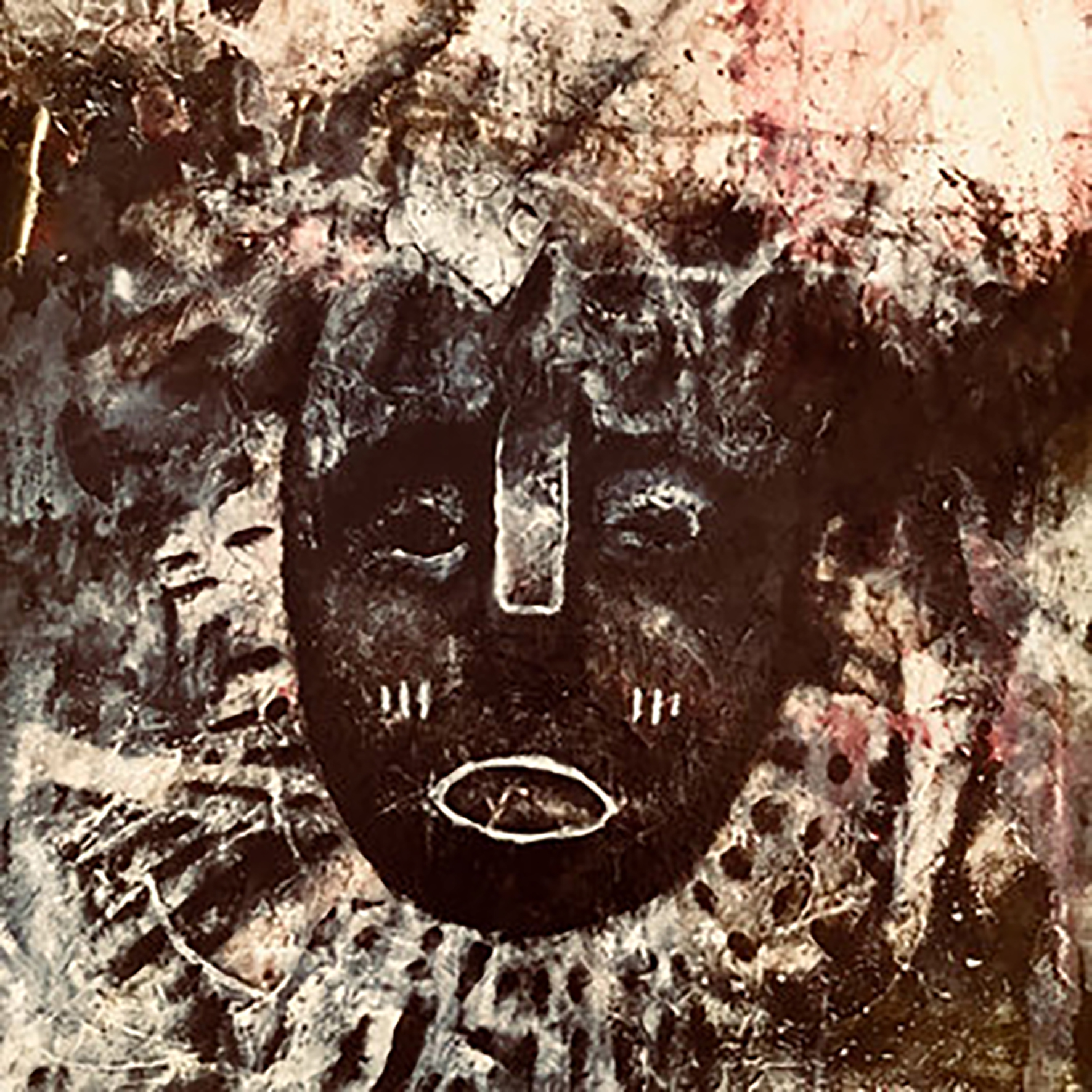
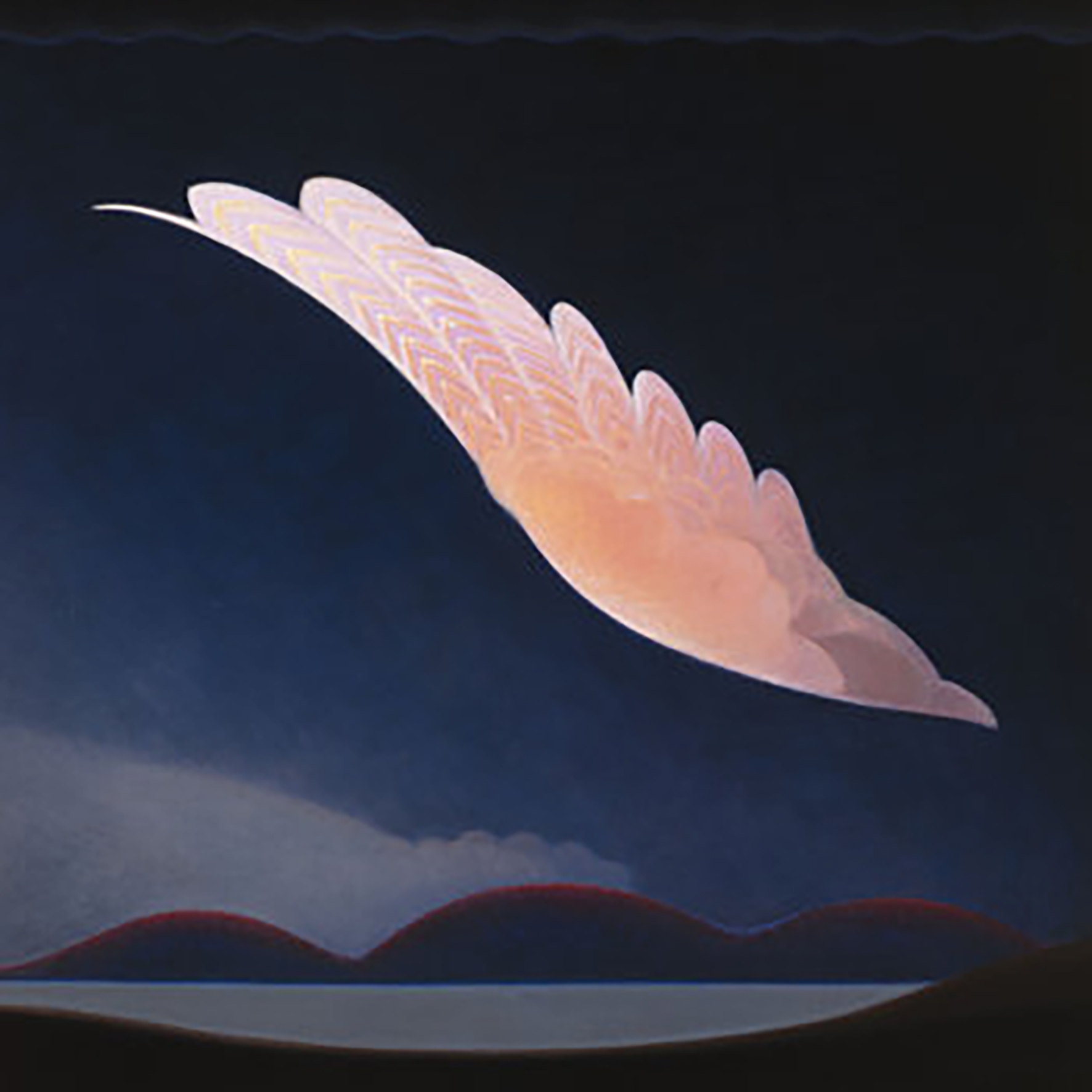
 Part of Ulrich Schnauss's musical history is building layers of beautiful electronic imagery, both within his solo work and partnering with others. Schnauss is paired up once again with Danish recording and mastering engineer Jonas Munk, member of space rockers Causa Sui and half of the ambient chill-out duo Billow Observatory. These two equally talented creators produce a lush mélange of extraordinarily hypnotic dreamscapes on Eight Fragments Of An Illusion. Rich kosmische textures, vibrant guitar, and concentrated layers of electronic atmosphere make for an engaging ride, especially when experienced on headphones.
Part of Ulrich Schnauss's musical history is building layers of beautiful electronic imagery, both within his solo work and partnering with others. Schnauss is paired up once again with Danish recording and mastering engineer Jonas Munk, member of space rockers Causa Sui and half of the ambient chill-out duo Billow Observatory. These two equally talented creators produce a lush mélange of extraordinarily hypnotic dreamscapes on Eight Fragments Of An Illusion. Rich kosmische textures, vibrant guitar, and concentrated layers of electronic atmosphere make for an engaging ride, especially when experienced on headphones.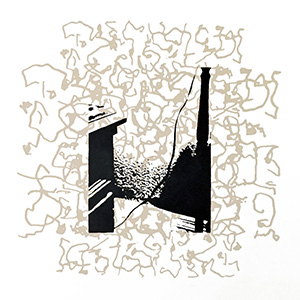 Founded as a band in Omaha, Nebraska in 1998, Naturaliste's first release in over 15 years is certainly a drastic departure from the local, improvised shows the group was responsible for. Rather than those frequent, though often dubiously captured recordings, Temporary Presence is not only a highly quality document of fully realized artistry, but also a document of where the band is so many years later.
Founded as a band in Omaha, Nebraska in 1998, Naturaliste's first release in over 15 years is certainly a drastic departure from the local, improvised shows the group was responsible for. Rather than those frequent, though often dubiously captured recordings, Temporary Presence is not only a highly quality document of fully realized artistry, but also a document of where the band is so many years later.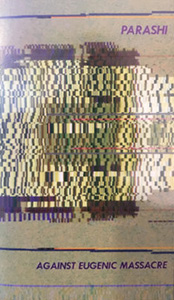 Mike Griffin, as Parashi, is one of the most prolific noise artists in the upstate New York region, both on his own and in collaborations with others, such as John Olson (as Spykes) and Noise Nomads. Against Eugenic Massacre features him doing what he does best: a murky combination of psychedelic electronics, incidental rhythms, and mysterious ambiences that perfectly balances between harsh experimentation and complex environments.
Mike Griffin, as Parashi, is one of the most prolific noise artists in the upstate New York region, both on his own and in collaborations with others, such as John Olson (as Spykes) and Noise Nomads. Against Eugenic Massacre features him doing what he does best: a murky combination of psychedelic electronics, incidental rhythms, and mysterious ambiences that perfectly balances between harsh experimentation and complex environments.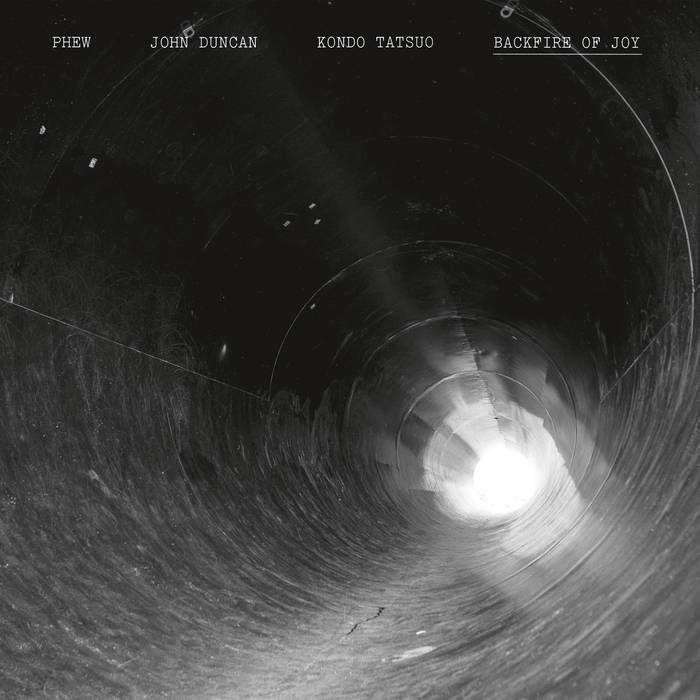 This short release captures the only performance from the trio. Recorded at Hosei University, Tokyo, on John Duncan’s first visit to Japan in 1982, it is a fascinating document both in the context of that visit but also in terms of the creativity, emotion, technique, and improvisation. The participants are meeting here for the first time, although they were familiar with each other’s work through tape exchange. Duncan is finding and processing shortwave radio signals, Tatsuo using piano, tape loops, and synth textures, and Phew vocalizing in English and Japanese. 
This short release captures the only performance from the trio. Recorded at Hosei University, Tokyo, on John Duncan’s first visit to Japan in 1982, it is a fascinating document both in the context of that visit but also in terms of the creativity, emotion, technique, and improvisation. The participants are meeting here for the first time, although they were familiar with each other’s work through tape exchange. Duncan is finding and processing shortwave radio signals, Tatsuo using piano, tape loops, and synth textures, and Phew vocalizing in English and Japanese. 
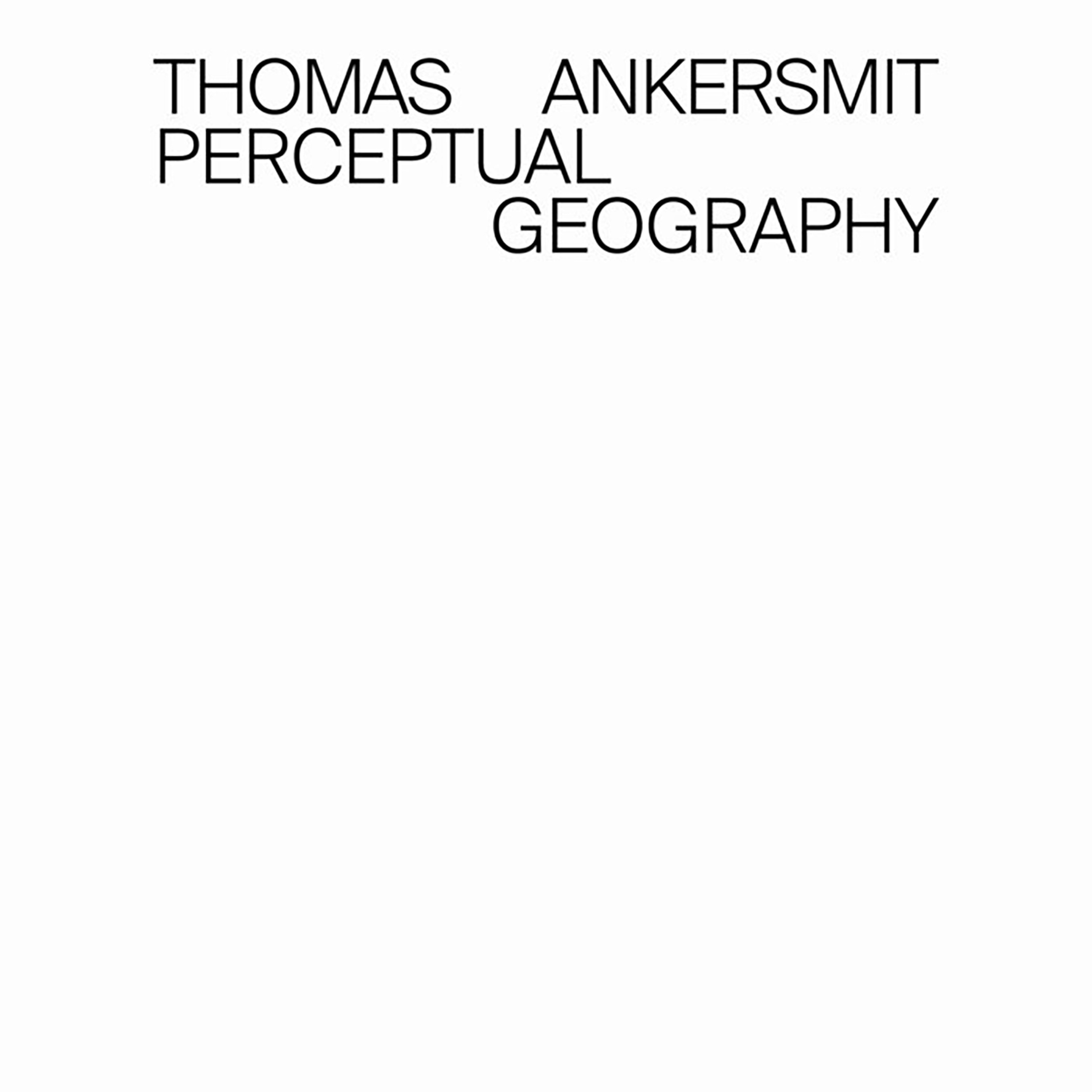 Three years after the mesmerizing Homage to Dick Raaijmakers, Thomas Ankersmit is back with yet another bombshell inspired by an underappreciated electronic music visionary. In this case, that visionary is Maryanne Amacher, who also happens to be the person who fatefully introduced Ankersmit to his Serge modular synth. Naturally, the Serge retains its central role from the Raaijmakers album and Ankersmit masterfully wields it again to conjure up another hallucinatory swirl of phantom sounds and strange aural phenomena. The conceptual themes are bit different this time around, however, as Ankersmit explores the ideas laid out in Amacher's "Psychoacoustic Phenomena in Musical Composition: Some Features of a Perceptual Geography" essay. Unsurprisingly, Ankersmit does a stellar job psychoacoustically mapping out his own compelling perceptual geography with this release, but his most striking bit of sorcery actually occurs off the album, as the piece was engineered to trigger otoacoustic emissions, which are "sounds emanating from inside the head, generated by the ears themselves."
Three years after the mesmerizing Homage to Dick Raaijmakers, Thomas Ankersmit is back with yet another bombshell inspired by an underappreciated electronic music visionary. In this case, that visionary is Maryanne Amacher, who also happens to be the person who fatefully introduced Ankersmit to his Serge modular synth. Naturally, the Serge retains its central role from the Raaijmakers album and Ankersmit masterfully wields it again to conjure up another hallucinatory swirl of phantom sounds and strange aural phenomena. The conceptual themes are bit different this time around, however, as Ankersmit explores the ideas laid out in Amacher's "Psychoacoustic Phenomena in Musical Composition: Some Features of a Perceptual Geography" essay. Unsurprisingly, Ankersmit does a stellar job psychoacoustically mapping out his own compelling perceptual geography with this release, but his most striking bit of sorcery actually occurs off the album, as the piece was engineered to trigger otoacoustic emissions, which are "sounds emanating from inside the head, generated by the ears themselves."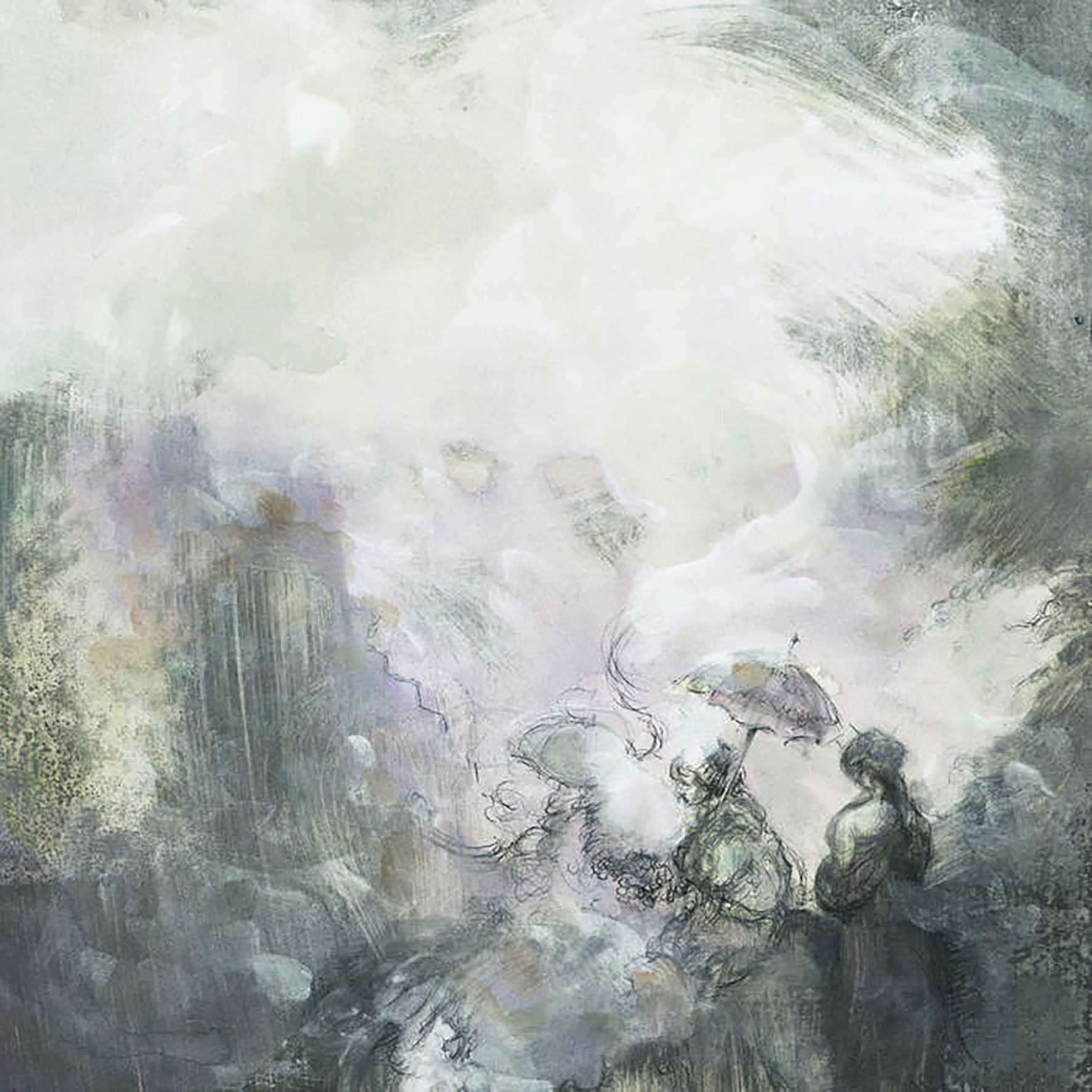 Newly reissued on vinyl (and digitally) with beautiful new artwork, Paradise Lost was originally released as a cassette back in 2019. As is the norm for many Chalk releases, additional details beyond the fact that it exists are quite thin, but this one takes that to an amusing extreme, as the Discogs entry for the original cassette notes "label and artist name are not listed on the release." That said, I believe I can say with moderate certainty that these two longform pieces were recorded on an 8-track reel-to-reel between 2016 and 2018 and that Chalk primarily played a synthesizer. Also, his Ghosts on Water bandmate Naoko Suzuki contributed some very well-hidden vocals and created the artwork for the original tape. To some degree, it makes sense that this album originally surfaced as a very limited-small run tape, as it does not feel like one of Chalk's more significant opuses, but it is quite an enjoyable and interesting release nonetheless. In fact, the title piece feels like legitimately prime Andrew Chalk material to me, though I suspect many longtime fans will be more fascinated by the surprising and divergent "This Pendent World."
Newly reissued on vinyl (and digitally) with beautiful new artwork, Paradise Lost was originally released as a cassette back in 2019. As is the norm for many Chalk releases, additional details beyond the fact that it exists are quite thin, but this one takes that to an amusing extreme, as the Discogs entry for the original cassette notes "label and artist name are not listed on the release." That said, I believe I can say with moderate certainty that these two longform pieces were recorded on an 8-track reel-to-reel between 2016 and 2018 and that Chalk primarily played a synthesizer. Also, his Ghosts on Water bandmate Naoko Suzuki contributed some very well-hidden vocals and created the artwork for the original tape. To some degree, it makes sense that this album originally surfaced as a very limited-small run tape, as it does not feel like one of Chalk's more significant opuses, but it is quite an enjoyable and interesting release nonetheless. In fact, the title piece feels like legitimately prime Andrew Chalk material to me, though I suspect many longtime fans will be more fascinated by the surprising and divergent "This Pendent World."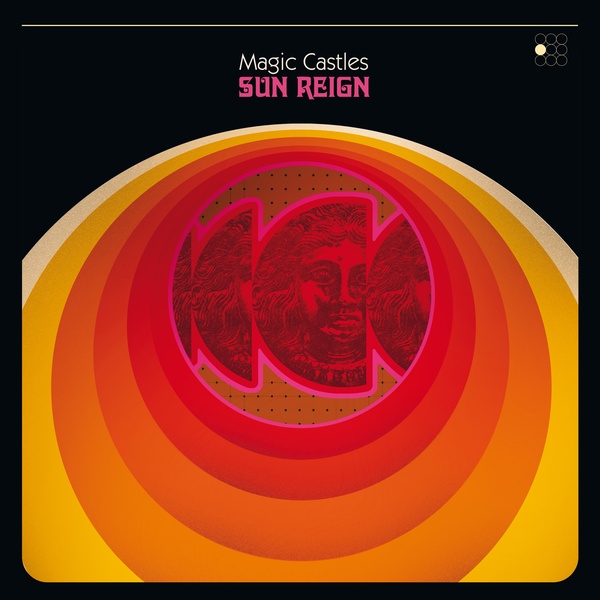 Minneapolis-based Magic Castles make a glorious return with their fourth release on Anton Newcombe's label, weaving together jangly hooks and minor chords and slathering it with fuzz. The release is triumphant in that it was released at all, following the band's 2016 hiatus and songwriter Jason Edmonds' near-fatal car accident in 2019, not to mention contending with a pandemic. Sun Reign is a lush and dreamy masterpiece of layered musical intensities, awash in evocative imagery and heartful melodies.
Minneapolis-based Magic Castles make a glorious return with their fourth release on Anton Newcombe's label, weaving together jangly hooks and minor chords and slathering it with fuzz. The release is triumphant in that it was released at all, following the band's 2016 hiatus and songwriter Jason Edmonds' near-fatal car accident in 2019, not to mention contending with a pandemic. Sun Reign is a lush and dreamy masterpiece of layered musical intensities, awash in evocative imagery and heartful melodies.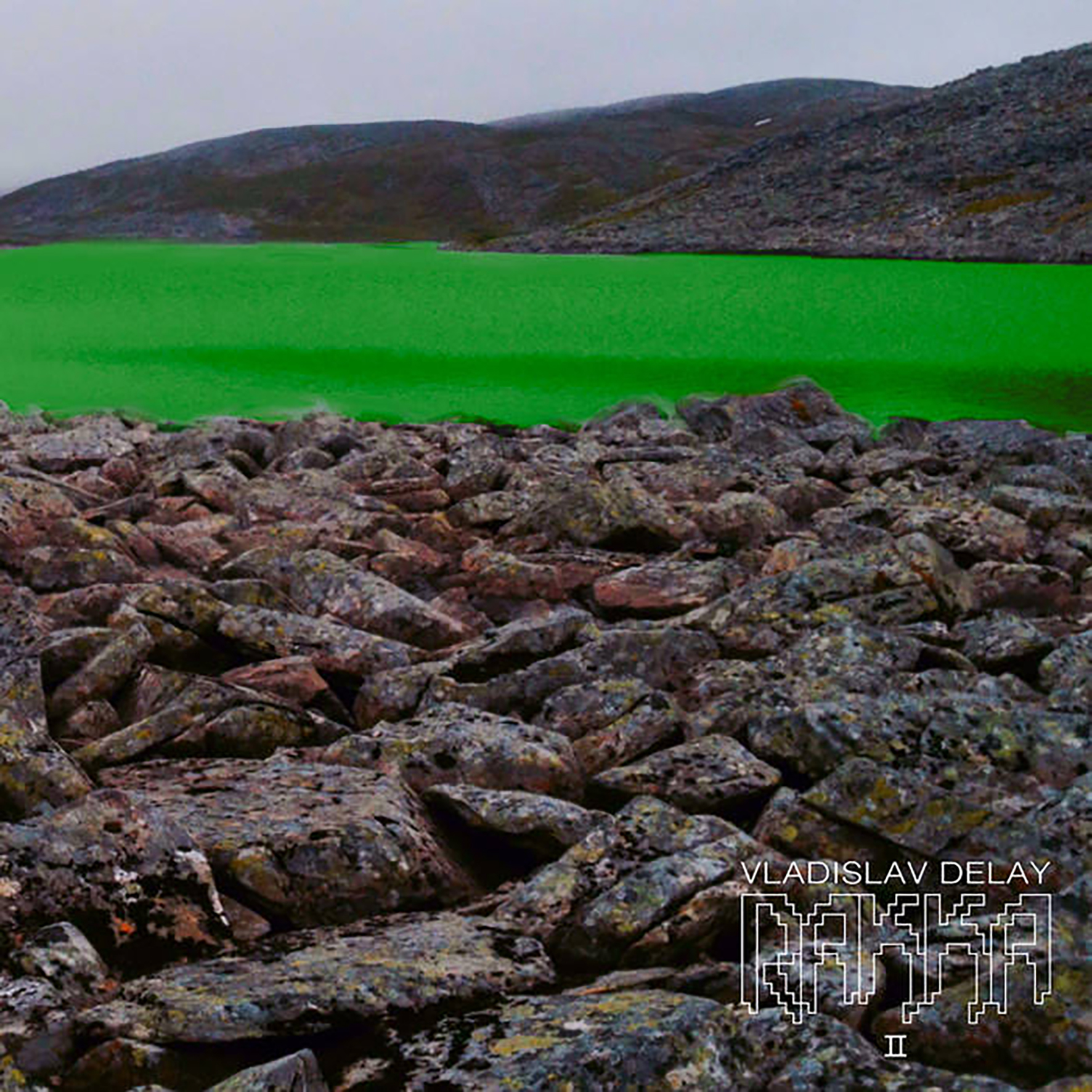
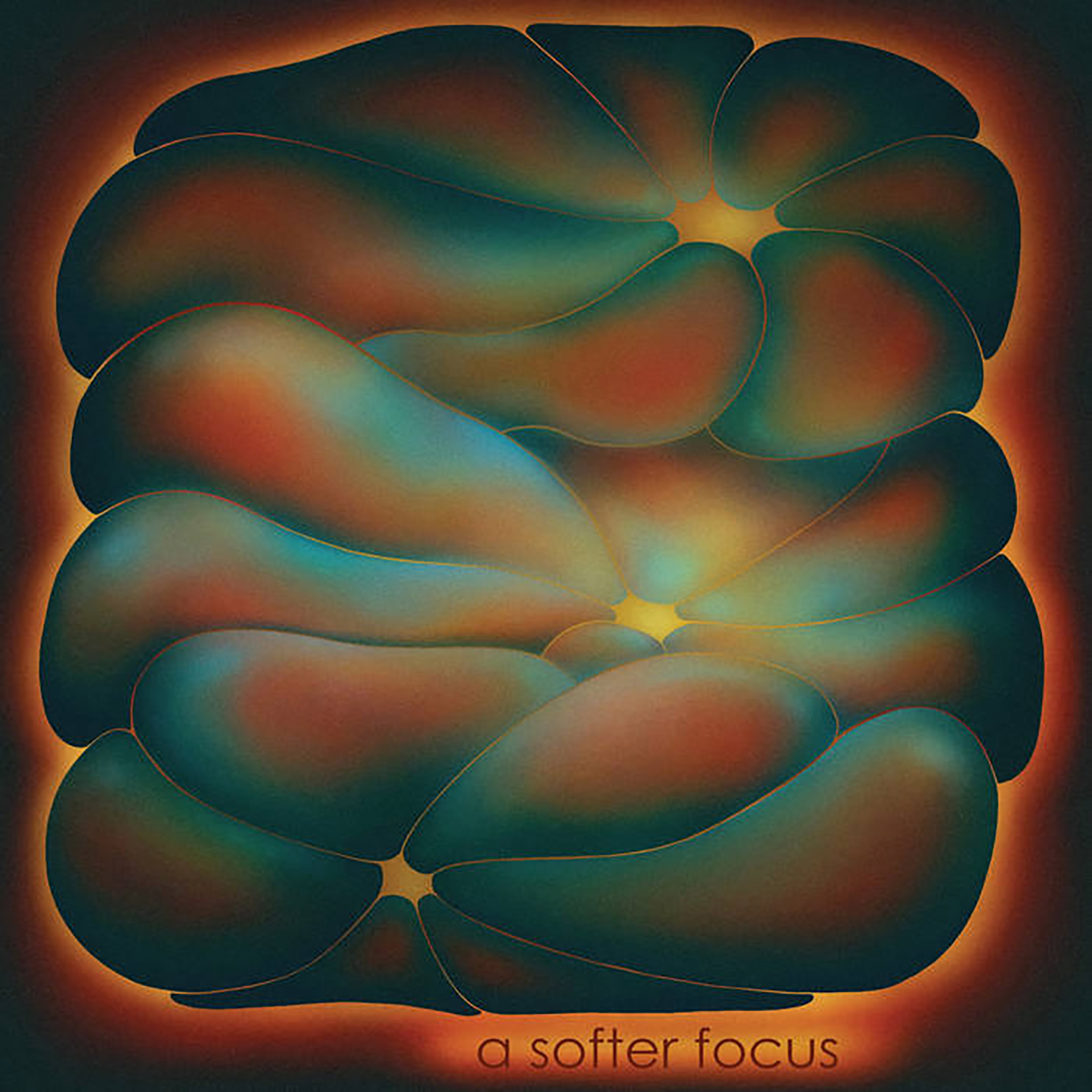
 Forthcoming.
Forthcoming.